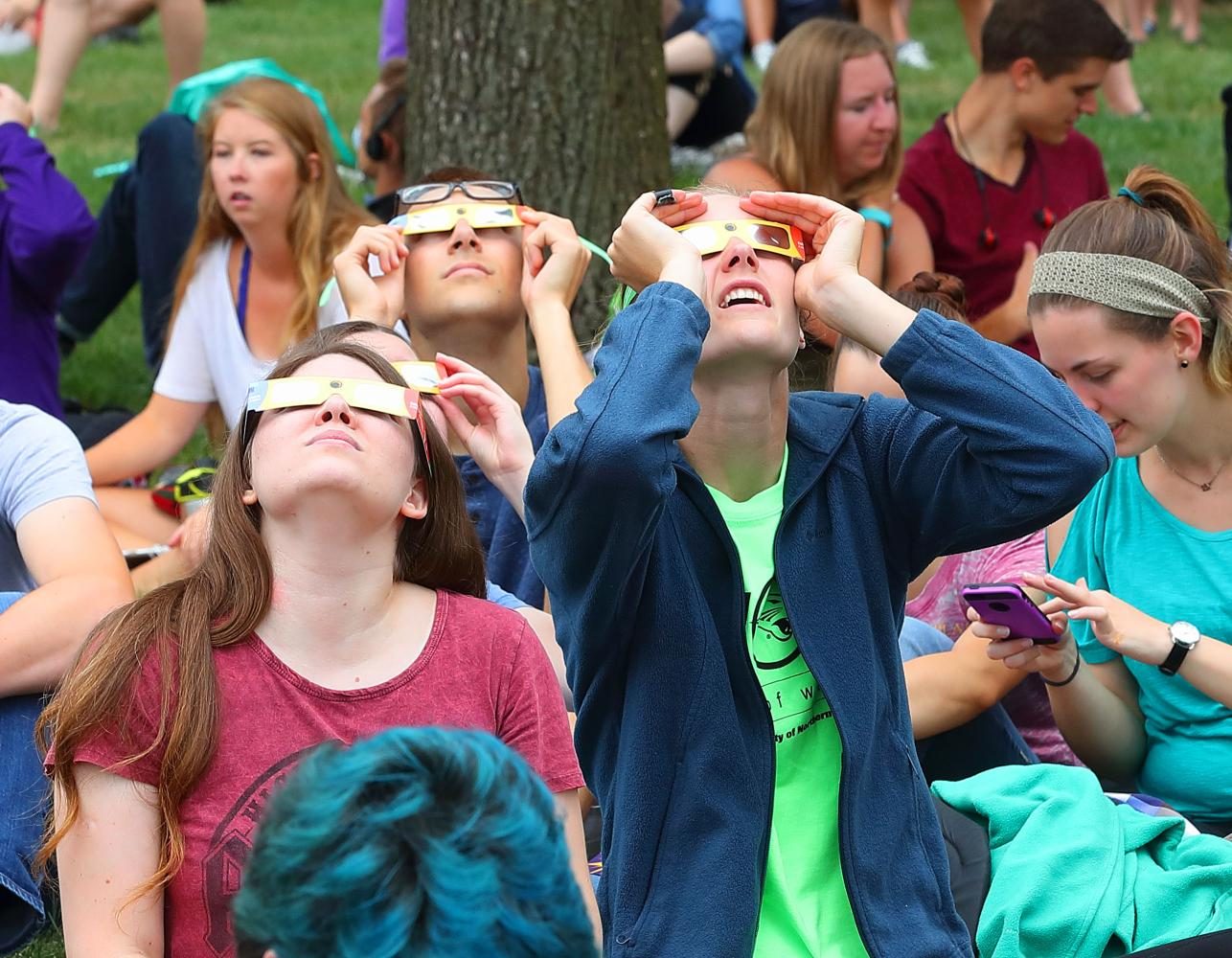The Great American Eclipse of 2017
Aug 24, 2017
On Monday, a cloudy sky wasn’t enough to prevent dozens of students and community members from gathering on UNI’s campus to witness a historic astronomical event, the likes of which hadn’t been seen in the United States in 38 years.
Despite the clouds above, a crowd of over 100 people camped out on the lawn next to Rod Library and the Campanile to view a partial solar eclipse.
UNI’s Department of Earth and Environmental Science joined with UNI STEM and the Iowa Academy of Science to organize a viewing party for the much-anticipated solar eclipse, held on Monday from 12 p.m. to 2 p.m.
“I think the people I saw enjoyed what they did see,” said Siobahn Morgan, head of the earth and environmental science department. “They seemed to be happy and satisfied, and people were just having a good time […] I couldn’t control the weather, but they seemed to enjoy the day regardless of the weather or the lack of spectacular show in the sky. That’s our real goal — to make sure everyone enjoys it and enjoys it safely.”
The event began in Rod Library, where students could pick up certified eclipse safe glasses. Reminiscent of retro 3D paper glasses, this special eyewear allowed students to view the eclipse safely by blacking out everything except the sun.
In the event that there were not enough glasses, which turned out to be the case, pinhole viewers were handed out. They were another safe alternative to view the eclipse. By holding up the viewer to the sun rays, the holes projected an image of the sun onto a light-colored, flat surface. Multiple telescopes had also been set up to help with the viewing.
Morgan, along with her collaborators from UNI’s STEM office and the Iowa Academy of Sciences, began planning for this event about a year ago.
Anticipating the possibility of bad weather, Morgan made sure to include an indoor component in the library for the viewing party, which included a display of moon rocks, a live feed screening of the eclipse and a whiteboard to record and track the temperature leading up to, during and after the eclipse.
This data was being collected by the university, which they would send to NASA after the event. The temperature could be seen dropping as the time of the eclipse approached. NASA also provided a free app that allowed users to collect, track and record cloud and other data that they themselves could send to NASA.
“We have to plan for every possibility. You’re not just planning for one thing; you are planning for a continuum of possibilities,” Morgan said. “The planning was a little bit more hectic because with astronomical events, or anything that depends on the condition of the sky, we always [want] to have something that isn’t weather dependent.”
Kaiser Kedley-Bergmann, a freshman biology major, was one of the students in attendance at Monday’s viewing party who expressed excitement for the historic eclipse.
“This all seems really cool,” Kedley-Bergmann said. “It’s really neat that they’re giving people a chance to come and see it, because it is a rare occurrence. I really appreciate that they’re handing out the glasses for it.”
Morgan and her colleagues in the earth and environmental science department regularly host events, such as an observatory open house and planetarium shows, which are open to the public. The goal of these events is to promote science to both the students and the surrounding community.
“It’s part of our lifeblood to get people interested and aware of what’s going on in the world around them, to pay attention,” Morgan said. “It’s good to always have a presence in the community. We usually don’t have to ask people to come by, they just want to come check it out.”
Morgan’s enthusiasm for this field seemed to only be rivalled by the crowd’s eagerness to view the eclipse on Monday.
Julie Fuller, a junior psychology major who was in attendance, summed up the event, saying, “It [was] an amazing astronomical phenomenon.”








